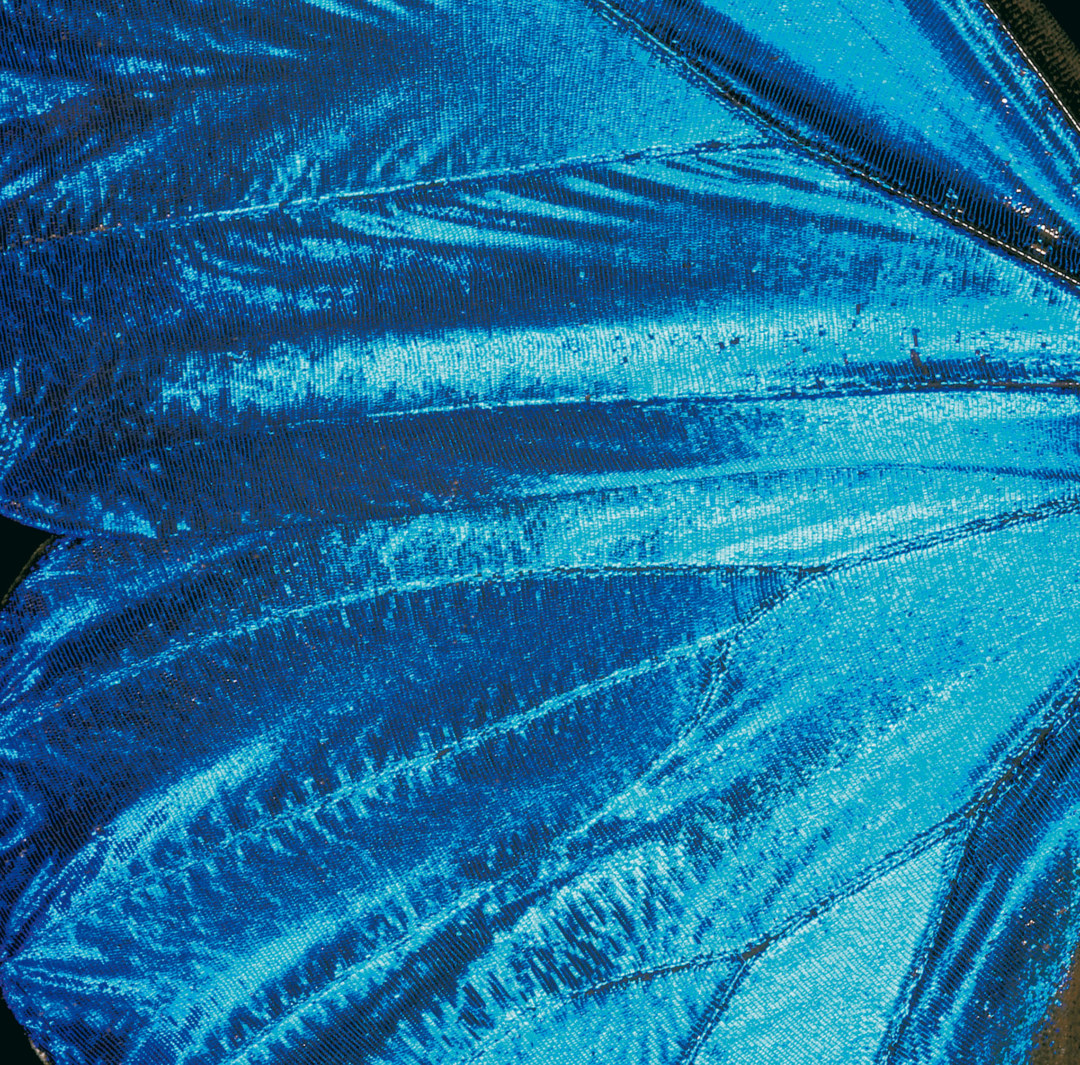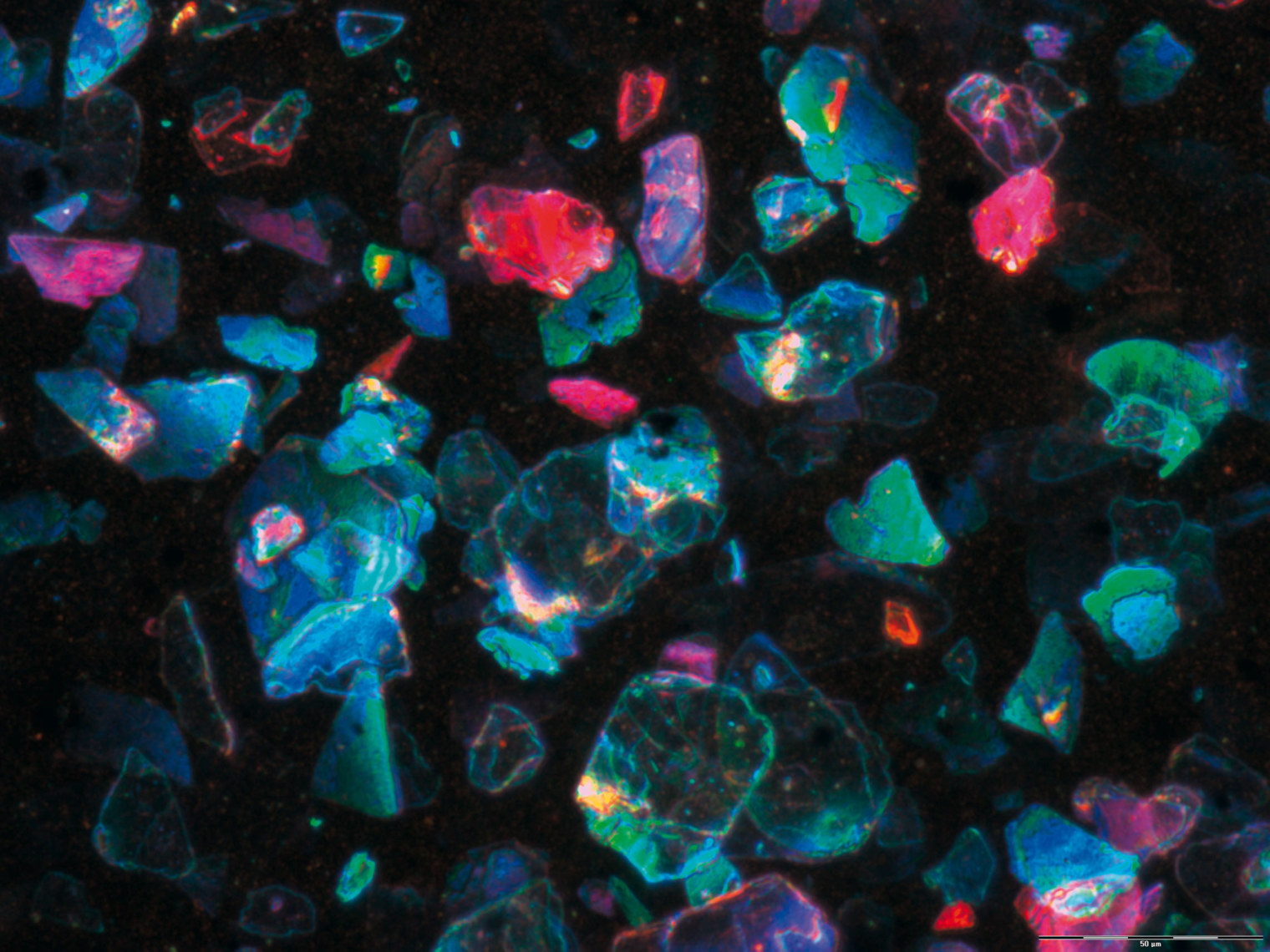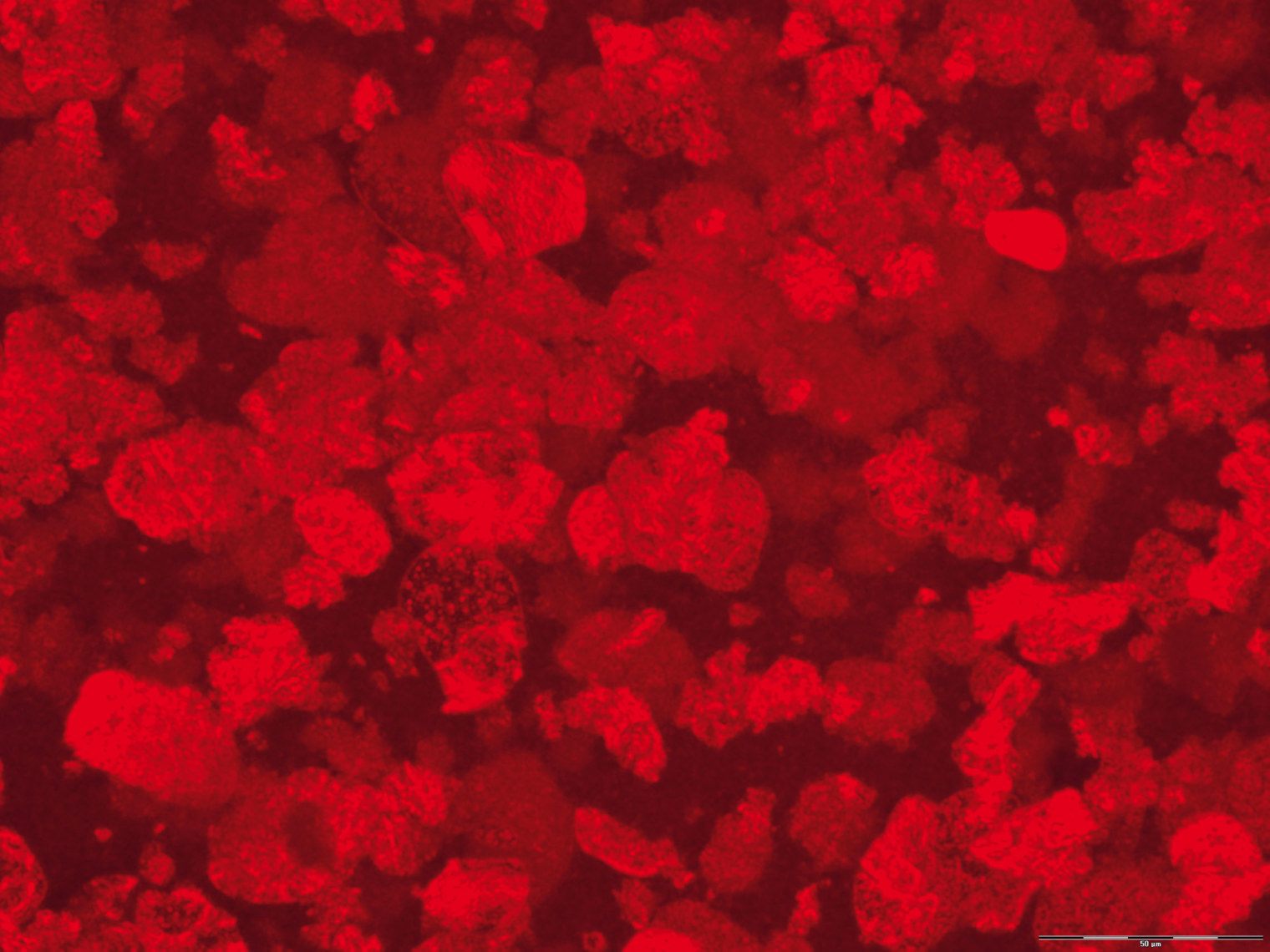Magical attraction
Ursula Jünger is a graduate biologist who has been working in the Butterfly House since it opened in 1996. She has observed thousands of butterflies in that time, and has even planned her own garden at home to support the largest possible variety of species. She knows what type of nectar the Peacock butterfly prefers and what colors magically attract the Common Brimstone. Of course, she also knows a lot about the tropical species that live in the Butterfly House. “Some are attracted to a specific aftershave, other to a flashy color. For the butterflies, visitors who exude a certain scent or wear a colorful shirt appear to be a huge wandering flower,” says Jünger.
The insect’s colorful wings are an adaptation to the lush flora and fauna of the tropics. Depending on the light and perspective, the color of some species even seems to vary. This effect is known as “iridescence” or “pearlescence”. But what underlies these different shades of color, the iridescence and the luminescence? “Butterfly wings are made of chitin, which is colorless,” says Jünger. “The colorful appearance is a product of the interaction with a broad-spectrum light source.” However, a distinction can be made between pigments and structural colors.

The color of the Blue Morpho’s wings is created by nanostructures.
Pigments include natural colorants that absorb the light of a particular wavelength.
So, for example, if a wing appears red, that is because the pigment absorbs all wavelengths except those corresponding to the color red. If every wavelength is reflected, then the color is white. Pigments are incorporated into the chitin: “Melanins, for example, produce a reddish, brown or black color,” explains Jünger.
The color black serves an additional purpose: It absorbs more solar radiation than lighter colors, meaning more heat is absorbed. Unlike pigment colors, structural colors arise from way that light is refracted by nanostructures on the wing surfaces. “Looking at the wings under the microscope, you see a structure that resembles a Christmas tree,” says Jünger. Millions of tiny scales are arranged like roof tiles, 0.1 mm long and 0.05 mm wide, with fine grooves that refract light.

Light is refracted by the scales of the butterfly’s wings (here under the microscope).
This is how the gorgeous iridescence of the South American Blue Morpho is produced.
“The scales can be thought of as different tiers,” explains Jünger. “Each tier reflects the light differently.” A fraction of the incident light is reflected immediately, while some of the light penetrates deeper into the structure before being reflected. The waves of the returning light overlap, resulting in amplification or attenuation at different wavelengths in a process called interference. As a result, the color impression changes depending on the viewing angle. In nature, the colors of the wings in many species are the result of a combination of pigmented and structured scales: The iridescence is generated against a colored background. The brilliant blue of the Blue Morpho butterfly looks so intense because of the refraction of light on the scales of its wings. Pigments are not involved.
Do not touch!
Just as the climate is more temperate in our latitudes, the colors of our butterfly species are more subdued compared to their tropical relatives. But they are nonetheless colorful. “There are a variety of reasons for the intense colors of some butterflies. The most important reason is pairing; butterflies need to be attracted to the opposite sex and draw attention to themselves,” explains Jünger.
Some species camouflage themselves by adapting to their environment, others have coloring that resembles that of a wasp, serving as a deterrent to birds, which are among their natural enemies. Mankind has also had an impact on some species: The peppered moth originally used to be white like the trunk of the birch tree, but is now darker. The change in color is a result of industrialisation, which has polluted the air, in turn leading to darker birch trunks. “The modern color of the peppered moth is thus an adaptation to changing environmental conditions,” explains Jünger.
Whether brilliantly colored or more subdued – all types of butterflies have one thing in common: Their scales and thus their beautiful colors are damaged and destroyed by touch.
Development—A fleeting model
The orange paint of the sports car parked near the Wörwag office in Zuffenhausen shines and glitters in the blazing sun. Depending on your viewing angle, the color shifts from yellowish to reddish. “This color effect also depends on the angle of the sun’s rays,” says Jürgen Ortmeier, Development Manager at Wörwag. “It’s the same principle as applies with the structural colors of butterflies.” For industry, nature is like a giant test lab.
Over the course of thousands of years, many plants and animals have adapted to perfectly fit their environment, securing their survival. It’s therefore no surprise that researchers and technicians look to nature for answers to complex technical challenges. “As a paint and coatings manufacturer, we can learn a lot from nature,” says Ortmeier. “In nature, colors serve as signals to warn or attract, and the appearance can differ depending on the surface structure and refraction of light.”
Since the 1960s, scientists have been studying a field known as bionics – where biology meets technology – which is a relatively young field of research. Instead of trying to copy nature, it is an attempt to learn from it and to draw conclusions: As with butterfly wings, different color effects on vehicles can be created with nanostructures.
Nano means very small: The thickness of such structures is in the range one tenth of a micron. A micron is 0.001 millimeters.

It all began with “fish silver”
Vehicles paintwork consists of up to four layers of paint. “The color is determined by the base coat,” says Herbert Kost, Head of Color and Design for Wörwag. “This first coat contains the color pigments and mica, which contributes to the pearlescent effect.” Natural shine and shimmer have fascinated people for a long time.
The oldest pearlescent pigment, called “fish silver”, was made in the 17th century from the scales of the white fish – a type of carp. “The scales were milled in water until the shimmering material could be separated out,” says Kost. It was a huge effort: 100 tons of fish were required for two kilograms of fish silver. So the search for a more efficient production method began.
Today, a special raw material is used to produce the pearlescent effect. “We use mica, which comes from India. The mineral is mined, then it is cleaned, ground, and coated with titanium dioxide, which is a metal oxide,” Ortmeier explains. Both mica and titanium dioxide are semi-transparent. Some of the light penetrates the outer layer of titanium dioxide, while some is reflected.
The portion of light that penetrates is refracted at the interface with the mica. The waves of the returning light overlap, resulting in amplification or attenuation at different wavelengths in a process called interference. This phenomenon results in the iridescence or pearlescence that we also observe with butterfly wings. “In the coatings industry, this is called the color flop effect. Whether the light is reflected at this boundary layer of mica or titanium dioxide, or goes through unbroken, depends on the angle of incidence of the light. If the titanium dioxide layer is very thin, the effect is silverwhite.
Paint with color flop effect
Thicker layers result in darker interference colors. From matte mother-of-pearl shimmers to the full spectrum of rainbow colors, anything is possible. Although we don’t have the roof tile structures of butterfly scales for car paintwork, the principle is the same,” explains Ortmeier.
Obviously, Ortmeier and Kost have a strong professional interest in the array of color found in nature. “I have been to the Butterfly House many times and I find butterflies fascinating,” says Ortmeier. Herbert Kost also went on vacation in Central America, where he was impressed by the colorful diversity of butterflies. Still, Kost says they would not go as far as nature does with iridescent colors for car paintwork. People want the color flop effect for vehicles – but in moderation. “After all, you still have to like your car ten years later.”

Reinhard Kiefel, Head of Color Development
Reinhard Kiefel
began his career with the company 18 years ago as a color technician and is now Head of Color Development. “Wörwag allows me the chance to implement my own ideas.”
Text: Christiane Wild-Raidt
Photos: Gilles Mermet / Science Photo Library, Eye of Science / Science Photo Library, Wörwag, Mercedes, Jos Schmid



